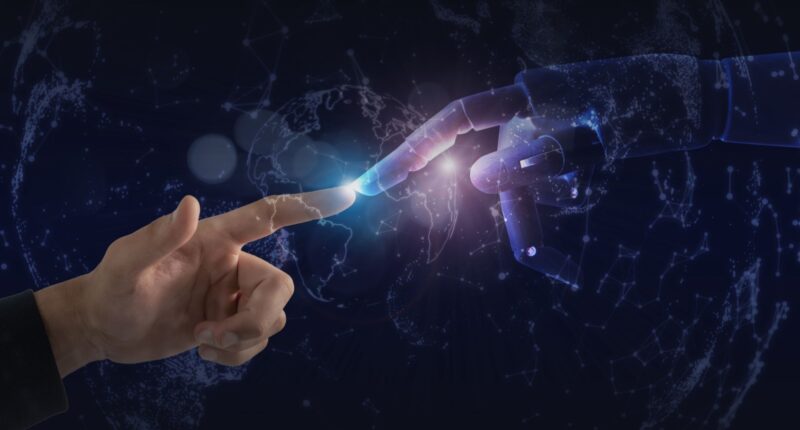
Opinions expressed by Entrepreneur contributors are their own.
You’re reading Entrepreneur Middle East, an international franchise of Entrepreneur Media.
The first exposure I had to the concept of artificial intelligence was when I saw the movie, Electric Dreams, where the main plot revolved around a love triangle between a man, a woman, and yes, a computer. Humorous implications aside, the application and integration of artificial intelligence (AI) is unignorable as we see this amazing technology evolve, and become a part of our lives- sometimes without us even knowing! That said, there are afterthoughts and fears too, as it will cause many industries to change forever, but let’s take a cursory glance at how this Terminator-esque technology unfolds before our very own eyes.
AI is a rapidly evolving field. Its applications are expanding every day as seen with companies such as Tesla implementing and advancing autonomous vehicles, as well as virtual assistants such as Apple’s Siri and chatbots such as OpenAI’s ChatGPT, which, day by day, can do more than telling you what the weather will be tomorrow. AI is being adopted to serve various aspects of our lives, and it is proving to be of significant value as we embrace the future, both with excitement and concern.
But as AI advances, the question of whether AI is avoidable grows within our daily conversations, and, more specifically, about how can we balance the use of AI and humans in various industries. Several factors suggest AI is indeed inevitable. One of the most significant is the growth in computational power over the past few decades. Powerful processors and algorithms have enabled computers to perform increasingly complex tasks, from facial recognition to natural language processing. Additionally, there is an ever-increasing demand for AI applications in the healthcare, finance, and transportation industries.
As these industries (and several more) become more reliant on automation and data analytics, the need for AI solutions will only grow. Furthermore, the potential benefits of AI are significant. For instance, AI has the potential to revolutionize healthcare, with predictive analytics and machine learning models helping doctors diagnose diseases and develop personalized treatment plans. AI can also aid in improving transportation by enabling autonomous vehicles to navigate roads safely and efficiently, reducing the number of accidents and traffic congestion.
However, the concerns regarding the negative impacts of AI cannot, or, rather, should not, be ignored. One of the most significant fears is the possible loss of jobs due to automation. As machines become more capable of performing human tasks, and that too with lower margins for error, there is a risk of widespread job displacement. This could lead to significant social and economic challenges, particularly for low-skilled workers.
There are also concerns about the now prevalent misuse of AI. We have all come across social media posts and stories regarding facial recognition algorithms being used for surveillance purposes and voice cloners conning people, all raising concerns about privacy and civil liberties. An example of this misuse occurred just last month as an interview with the supposed retired Formula One driver Michael Schumacher included AI-generated responses.
Despite these concerns, it is difficult to argue the value of AI. The benefits of the technology are too significant and impactful to ignore, and the demand for AI’s application will only grow in the coming years, due to our daily lives requiring technology for aspects such as banking and communication. As such, it is essential to focus on developing AI in a manner that is both morally and ethically responsible, as well as considering the potential risks and working to mitigate them.
The obvious albeit tricky route is the development of robust AI governance frameworks. These frameworks would outline ethical principles and guidelines for the development and use of AI technology, ensuring that it is used in a way that is consistent with our values and principles while avoiding any compromise on growth and development. The drawback of this approach is laying squarely on the developing grey areas of AI use.
Another approach is to develop AI solutions that augment and enhance human capabilities, rather than replace them. For example, AI could be used to help doctors make diagnoses or financial analysts make investment decisions. By working in collaboration with humans, AI can enhance our abilities and improve our decision-making processes, thereby encouraging a win-win situation for humankind and the proliferation of technology, which, in turn, may save many industries.
Finally, it is crucial to invest in education and training programs to prepare the current and future workforce for the changes that AI will bring. This includes developing skills in areas such as data analysis, programming, and machine learning, as well as protecting the creativity, critical thinking, and the “human touch” that are essential in a rapidly changing world.
In conclusion, history does not repeat itself, but it does rhyme; the strengths, weaknesses, and concerns of AI are all too similar to the dot-com boom of the early 2000’s. AI is a collective manifestation of how humans have forever perceived the future to be, and, therefore, is inevitable.
Related: The Open Letter Asking To Pause Artificial Intelligence Development Misses The Mark. Here’s Why.
This article is from Entrepreneur.com









